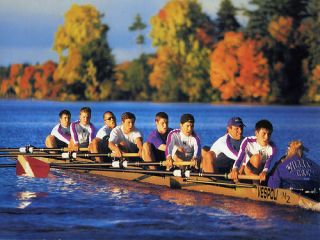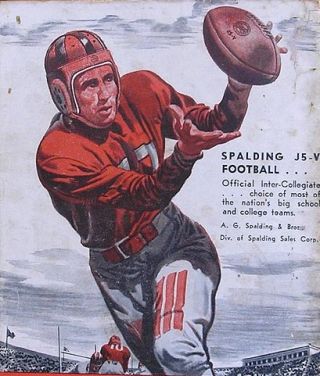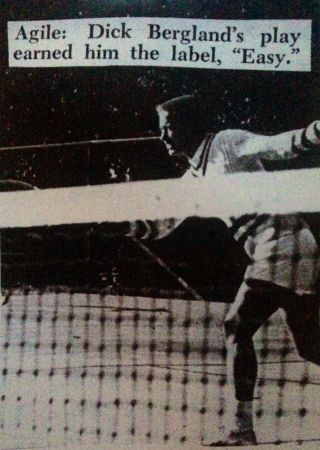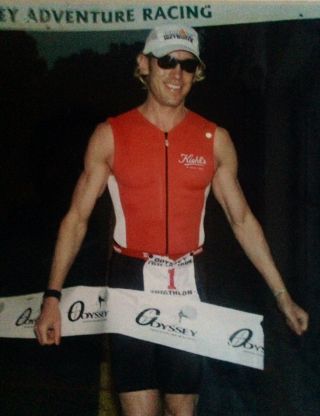Sport and Competition
High School Athletics Fosters a Lifespan of Well-Being
WWII veterans who played varsity sports in high school lived longer, healthier.
Posted January 2, 2014

A recent BioMed Central study of World War II veterans has identified that the single strongest predictor of well-being in later-life was whether someone played a varsity sport in high school. These findings support many of the recurring themes resonating in this blog—regular physical activity improves quality of life and optimizes the function of brain, body, and mind throughout a lifespan.
The BMD study tracked 712 World War II veterans who were healthy as young men and surveyed them 50 years later at an average age of 78. The new study, titled “Fit in 50 Years,” was published in BMC Public Health and looked at what factors of behavior, background, and personality impact the healthfulness of men over 70. The study was conducted by researchers Brian Wansink, PhD of Cornell University's Food and Brand Lab and Simone Dohle, PhD of the Swiss Federal Institute of Technology in Zurich.
The most surprising result from the study was that across the board, those who had played a high school sport in the 1930s or early 1940s, reported visiting their doctor fewer times annually throughout their lifespan. The aim of this study was to identify background or personality characteristics that predict whether a healthy 25 year-old would become a physically active 75 year-old. The researchers believe that these findings could have powerful implications for targeting physical activity and health interventions.

While the researchers did not find that personality traits (such as being dominant), nor environment (such as town size), strongly predicted physical activity in elderly age, playing varsity sports in high school did strongly predict remaining physically fit and having to make fewer doctor visits 50 years later in life.
The researchers believe that in order to develop effective environmental and policy interventions that increase physical activity in all ages, it is important to understand the factors that lead to both increased physical activity and sedentary behavior throughout generations.
Openness to Experience Leads to Physical Activity
Of the Big 5 personality traits, the researchers found that an openness to experience was linked to an inclination to play sports. The researchers noted that one personality trait—being adventurous—was associated with remaining physically active in old age.
Ironically, being adventurous was also positively related to visits to the doctor in old age, suggesting that being adventurous may foster physical activity, but probably also other, risky behaviors. The researchers do not recommend encouraging overly adventurous or ‘adrenaline junkie’ type behavior in adolescents. If you’d like to read more on this check out my Psychology Today blog “The Perils of Novelty Seeking.”

Varsity tennis player Richard Bergland, M.D.
Previous research on personality traits that lead to physical activity in children and adolescents have found that self-efficacy—which is the confidence in the ability to be physically active—led to playing high school sports. Unfortunately, if someone has low self-esteem or feels insecure he or she is more likely to avoid athletics, which is a double whammy because working out is such an amazing confidence builder.
As a gay teenager, I had a classic case of what psychiatrist Richard Green controversially tagged “Sissy Boy Syndrome.” Although I had played a lot of tennis as a kid, by the time I got to boarding school I had lost interest in sports. I had a very traditional and conservative 'old boys club' dean at boarding school. He was also the varsity football and baseball coach and found different ways to humiliate me, which only made me more resistant to be an athlete. It was a hostile environment and became a very self-destructive time for me.
My father was a varsity tennis player who earned the moniker ‘EZ’ because of his agility on and off the court and the general perception that academics and sports seemed to be 'easy' for him. He always said, "Of this I am absolutely certain, becoming a neurosurgeon was a direct consequence of my eye for the ball."
When I became adamantly "anti-jock" as a teenager it frustrated my father immensely. My dad really wanted me to be a superachiever, but only on his terms. I refused. To his credit, he understood the importance of playing sports in high school, which this study has confirmed ... But, he found subtle ways to chide me for giving up tennis and "wasting my potential," and failing to become the next Björn Borg. He thought it would motivate me. Of course, it backfired.
Interestingly, the pressure to be an athlete from my dad and my dean in high school put a chip on my shoulder and inspired me to prove myself—and prove them wrong by achieving world class records and writing "The Athlete's Way."
In many ways, what drove me to become an ultra-endurance athlete and break a Guinness World Record running 153.76 miles on a treadmill in 24-hours was a need to spite all the naysayers and homophobes I had ever encountered. My mantra as an ultra-endurance athlete was always, "You think I'm not that strong? You're wrong."
Trying to bully kids or make them feel ‘less than’ for not being a varsity athlete is a bad idea, which is one potential unintended backlash of this new study. Not everybody can be a varsity athlete. However, that doesn’t mean adolescents can’t find ways to be physically active in high school.
For example, when I started running in the early 80s it was primarily inspired by the invention of the Walkman. I love listening to music with headphones. In the summer of 1983 Flashdance was released triggering a combination of coming of age, feeling like a scrappy underdog and outsider who would prevail, combined with an inspiration to get ripped and be a physical ‘maniac.’
That summer I made a mixed tape with my two favorite albums and ran to this cassette in my Walkman every day—Side A was Bruce Springsteen’s “Greetings from Asbury Park," Side B was the first Madonna LP. I ended each side of the cassette with the 12” extended remix of Irene Cara singing "Flashdance...What a Feeling," which was my anthem. My body and mind transformed that summer and never since that summer have I gone for 72 hours without exercising. I did it my way, and believe anyone can.

Christopher Bergland winning a Triple Ironman triathlon.
After high school, I went to Hampshire College which doesn’t have tests, grades, or competitive sports. “Ultimate Frisbee” was the only organized sport at Hampshire. Nonetheless, I went running, biking or swimming just about every day in college. Again, this illustrates that although organized sports are linked to well-being in the new Cornell study, young people can create daily habits that include physical activity without being part of an organized team or part of a club. The personalized habits of regular physical activity formed in high school and college will last a lifetime.
Conclusion: How Can We Increase High School Activity and Decrease Screen Time?
The decreasing amount of time spent being physically active and the increasing amount of screen time among American children is an epidemic—but so is pushing our children too hard.
As the father of a 6-year-old, I realize the tightrope walk all parents face in terms of wanting your child to maximize his or her potential, but not wanting to push them to the breaking point. The most important lesson I try to pass on to my daughter is to love what you do, and pour your heart into it. If you are passionate about your daily process and make a solid effort, it really doesn't matter if you get a gold medal, blue ribbon, A+, or no recognition at all.
The bottom line of this study is that children who are inactive are more likely to gain weight, become obese and suffer from a wide range psychological and physical setbacks that could last a lifetime. The findings of this study confirm that importance of recess time, gym class, and high school athletic programs.
In an era of shrinking school budgets and an emphasis on standardized testing and crystallized intelligence a lack of physical activity is undermining American children which will hurt innovation and our economy in future decades.
The health benefits of physical activity have been scientifically established in thousands of studies and are common sense. Beyond the physical benefits of athletics, being active increases cognitive function, reduces ADHD symptoms and is an effective treatment for clinical depression and anxiety.
Unfortunately, the majority of American children, adolescents, and adults do not meet the minimum recommendations of physical activity. On top of this, in the digital era physical activity is decreasing during adolescence and adulthood, while sedentary behavior and screen time increases.
A few years ago, I connected with people from the Clinton Foundation’s Alliance for a Healthier Generation which is making great strides to increase physical activity and healthier food options for American children. The Alliance has partnered with Michelle Obama to create "Let's Move! Active Schools." Please click on the link to learn more about making schools in your community more active.
If you'd like to read more on this topic, check out my Psychology Today blog posts:
- “Stepping Outside Your Comfort Zone Keeps You Sharp”
- "How Does Daydreaming Help Form Long Lasting Memories?"
- “Mobility Is Key to Maintaining Social Networks as We Age”
- “Four Lifestyle Choices that Will Keep You Young”
- “What Drives Extreme Athletes to Life and Death?”
- “Can Physical Activities Improve Fluid Intelligence”
- “Too Much Crystallized Thinking Lowers Fluid Intelligence”
- “Childhood Creativity Leads to Innovation in Adulthood”
- “Fear of Falling Creates a Downward Spiral”
- “One More Reason to Unplug Your Television”
Follow me on Twitter @ckbergland for updates on The Athlete’s Way blog posts.




